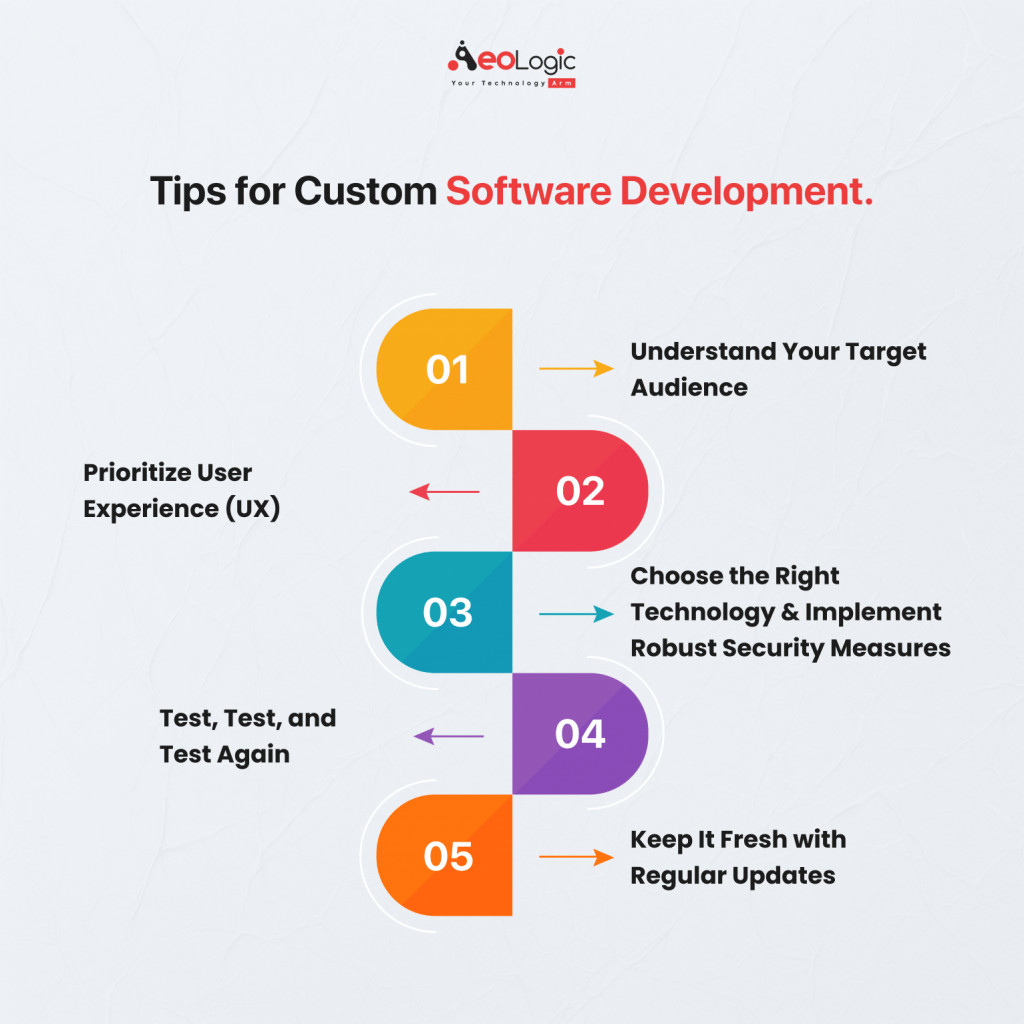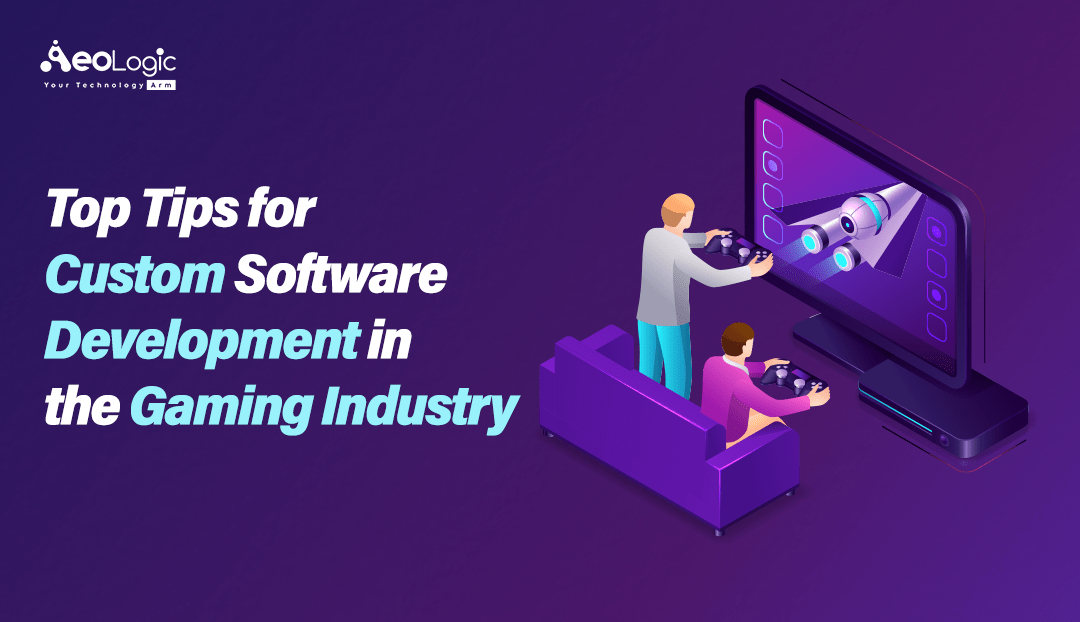Have you ever thought about diving into the gaming industry with your very own custom software? I know, it can seem like a daunting task. But, with the right knowledge and tools, it can be a rewarding venture. Today, we’re discussing Top Tips for Custom Software Development in the Gaming Industry to help you unlock this lucrative sector’s potential.
The gaming industry is booming. According to Newzoo’s Global Games Market Report, the industry was worth an impressive $174.9 billion in 2020 and has been growing rapidly. But let’s make sense of these figures with a clear and concise table:
| Year | Global Games Market Value |
|---|---|
| 2018 | $134.9 Billion |
| 2019 | $148.8 Billion |
| 2020 | $174.9 Billion |
Now, imagine capturing just a fraction of this pie with your custom software. Exciting, isn’t it?
Understand Your Target Audience
The first step in any successful custom software development journey, especially in the gaming industry, is understanding your target audience. Age, gender, interests, and platform preferences can all significantly impact the design and functionality of your game.
To illustrate, a study by Entertainment Software Association shows that 38% of gamers are aged 18-34. If this is your target demographic, it’s crucial to focus on elements that resonate with them.
Prioritize User Experience (UX)
Nothing spells doom for a game quicker than a bad user experience. UX is not just about good graphics. It covers the whole range from smooth navigation, logical flow, responsive controls, to satisfying in-game interactions.
Invest time in designing intuitive and immersive interfaces, keeping response times fast, and the controls easy to master. After all, a game that’s enjoyable to play is more likely to be recommended.
Choose the Right Technology
Once you’ve got your game concept and target demographic nailed down, it’s time to choose the right technology for development. Unity and Unreal Engine are popular choices, offering extensive functionalities and compatibility with multiple platforms.
Test, Test, and Test Again
The saying “Practice makes perfect” couldn’t be truer for custom software development in the gaming industry. Thorough testing helps uncover bugs, performance issues, and possible improvements. Make sure to include different types of testing such as unit testing, integration testing, and user acceptance testing.
Keep It Fresh with Regular Updates
The gaming industry is all about innovation. Keep your players hooked by providing regular updates with new features, levels, characters, or in-game events. This not only maintains interest but also offers opportunities for monetizing your game further.
Implement Robust Security Measures
Cybersecurity is paramount in the digital age. Protect your users’ data with strong security measures, and be transparent about your practices. This builds trust with your users and can save you from reputational damage and legal issues down the line.
Now, let’s dive into the top 10 tips for custom software development in the gaming industry to help you make a great game.
Also Read: Implications of Game-Changing Technologies in the Services Sector
Top 10 Tips for Custom Software Development in the Gaming Industry

Each tip is designed to empower you to create a custom game that resonates with your players, leading to a profitable and rewarding venture.
1. Know Your Audience
- Demographics: Understand who you’re designing for, considering age, gender, and preferences.
- Trends: Stay up-to-date with current gaming trends among your target audience.
In this diverse landscape, knowing your target audience is critical. What do they like? What games are they playing now? What platforms do they use? Remember, a well-understood player is easier to please, leading to better retention and engagement.
2. Focus on User Experience (UX)
- Design: Create intuitive, immersive interfaces.
- Performance: Ensure fast response times and easy controls.
The best games are those that immerse players in the world you’ve created. UX goes beyond aesthetics. It includes ease of use, clear instructions, fast load times, and consistent performance. Make it a seamless and enjoyable experience from the moment they launch the game.
3. Choose the Right Technology
- Compatibility: Select a technology that supports your target platforms.
- Functionality: Check the functionalities that the technology can provide.
Different technologies offer various advantages. Unity is excellent for mobile and indie games, while Unreal Engine is suitable for high-performance console and PC games. Your technology should also support future expansions and upgrades to your game.
4. Test Rigorously
- Bugs: Uncover and fix bugs through comprehensive testing.
- Improvements: Use testing to identify areas for improvement.
No player likes a game riddled with bugs or performance issues. Thorough testing is crucial to deliver a polished product. Embrace testing as an integral part of your development process, not just a final hurdle to overcome before release.
5. Keep It Fresh
- Updates: Regularly add new features, levels, or characters.
- Engagement: Run special in-game events to maintain interest.
A static game can quickly lose its appeal. Keep your players engaged with regular content updates and special events. Not only do these additions retain interest, but they also present opportunities for increased revenue through in-game purchases.
6. Prioritize Security
- Data Protection: Implement strong measures to protect user data.
- Transparency: Be clear with your users about your security practices.
With frequent reports of data breaches, cybersecurity is a significant concern for players. Implement robust security measures to protect user data and provide peace of mind. Be transparent about your practices to build trust and show respect for player privacy.
7. Implement Scalability
- Growth: Design your software to handle more users as your game gains popularity.
- Resources: Manage game resources effectively for a smoother experience.
Your game’s success can lead to a surge in players is your game ready to handle that growth? Plan for scalability from the start, ensuring your game can handle increased load without performance degradation.
8. Monetize Smartly
- In-game Purchases: Offer optional purchases to enhance gameplay.
- Ads: Integrate ads subtly to not disrupt the gaming experience.
Monetization is essential for your game’s profitability. However, it’s vital to strike a balance. In-game purchases and ads can provide income, but if implemented poorly, they can detract from the player experience.
9. Offer Excellent Customer Support
- Response: Quickly address player queries and issues.
- Updates: Regularly communicate with your players about updates or changes.
Even the best games can encounter issues, but excellent customer support can turn a potential negative experience into a positive one. Maintain an open line of communication with your players, addressing concerns promptly and keeping them informed about updates.
10. Learn from Others
- Competitors: Analyze successful games in your niche.
- Feedback: Take user reviews and feedback seriously.
There’s much to learn from both competitors and your players. Analyze successful games in your niche – what do they do well? Pay attention to user feedback and reviews, as they can offer invaluable insights for improving your game.
Final Words
The tips mentioned above for custom software development in the gaming industry are just the tip of the iceberg. As the industry evolves, new trends and technologies will emerge, requiring continuous learning and adaptability.
If you’ve made it this far, you’re already on the right path. So why not take the plunge? With passion, persistence, and these handy tips for custom software development in the gaming industry, you’ll be well on your way to creating something amazing.
Feel free to connect with the industry experts at Aeologic Technologies. They are just a call away to guide you on your journey in the gaming industry.
Frequently Asked Questions
What are some common pitfalls in custom software development for the gaming industry?
There are several common pitfalls developers should be aware of:
- Poor Planning: Failing to plan is planning to fail. This involves a lack of clear goals, unrealistic timelines, and ignoring your target audience’s preferences.
- Neglecting UX: A game that looks good but plays poorly won’t retain players. UX involves everything from game controls to UI design and game performance.
- Insufficient Testing: Bugs and performance issues can break a game’s success. Rigorous testing helps to prevent these problems from reaching your players.
How important is choosing the right technology for game development?
Choosing the right technology is crucial for your game’s success. It affects everything from the game’s performance to its compatibility with different platforms and even potential future upgrades. Tools like Unity and Unreal Engine offer powerful capabilities and are widely used in the industry.
Can I monetize my game without disrupting the player experience?
Yes, you can! Monetization is a critical aspect of game development, but it needs to be handled carefully. In-game purchases should enhance gameplay, not be a necessity. Ads can be a source of revenue, but they shouldn’t disrupt the gaming experience. Always consider your players first when deciding on monetization strategies.









